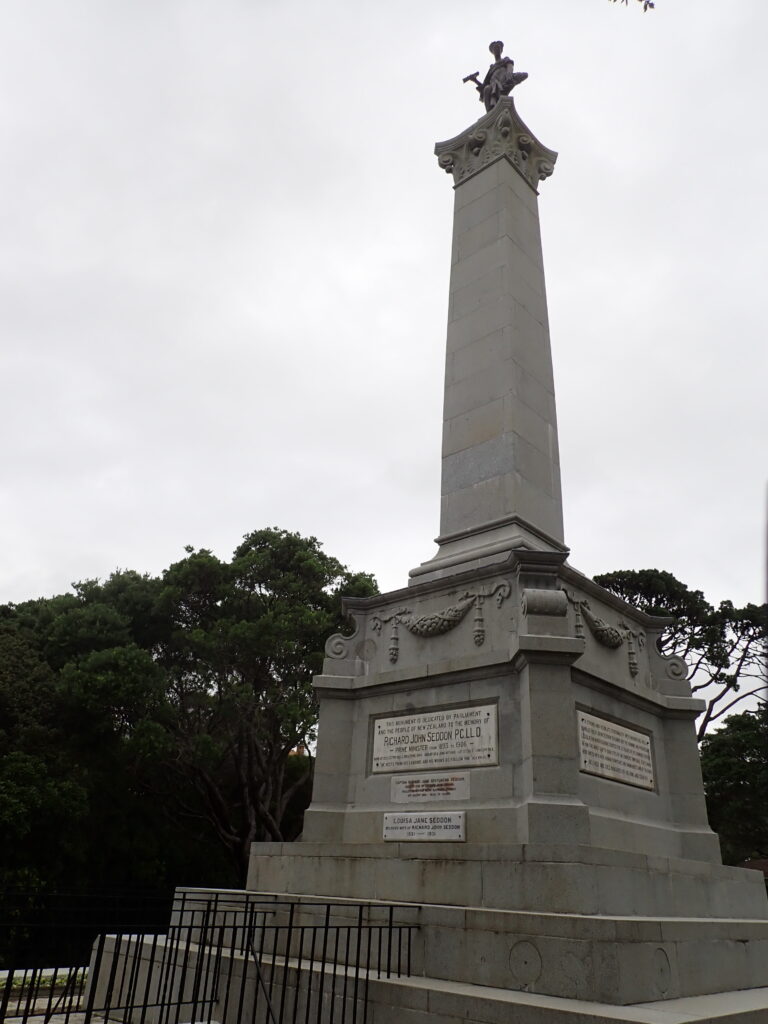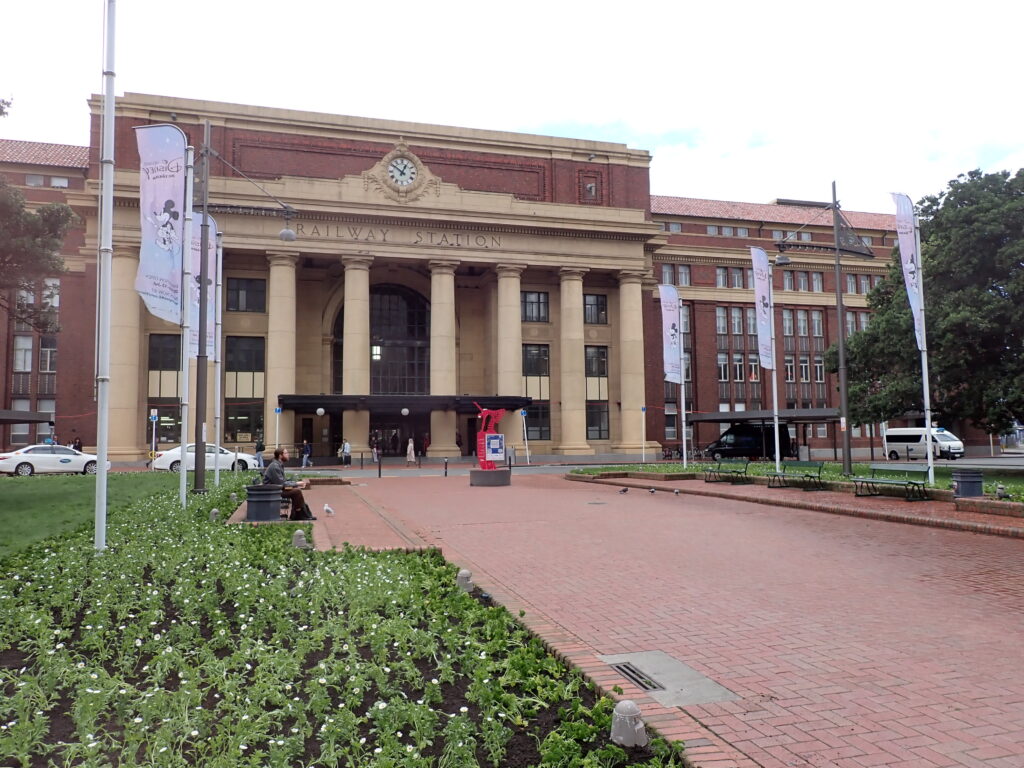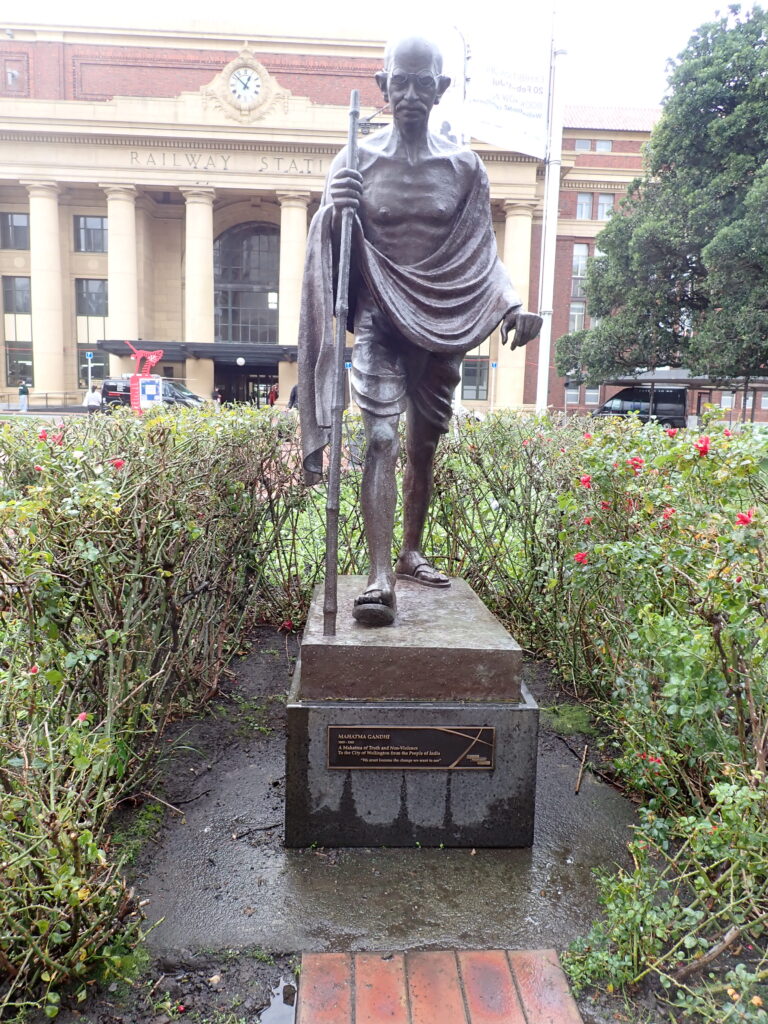Nothing planned for today. We are on our own. So, after spending 40 minutes on the phone with my bank to get them to clear my ATM card to be used to get cash, we went down for breakfast then headed out for a walk about.
Though situated between several mountains, and having some hills, Wellington is a very walkable city. Not too big and most things are situated close to the harbor.
We first headed to the Old St. Paul’s church, about a 15-minute walk from our hotel. The church built in the 1860’s is in a Gothic Revival style. It is constructed from New Zealand native timbers, with stunning stained-glass windows. The interior has been likened to the upturned hull of a ship, with exposed curving trusses.
Though no longer used as a parish church, it remains consecrated and is a popular venue for weddings, funerals and other services.
The flags displayed in the nave include the ensigns of the Royal Navy, the New Zealand Merchant Navy and the US Marine Corps (second division) which was stationed in Wellington during WW II.
Next, we headed to Bolton Street Cemetery and the museum there. Why visit a cemetery you may ask. At our age, I just say we are checking out real estate. But seriously, there is so much history in these old Cemeteries, the way they grow, diminish and gather people of various backgrounds together. There was a quote in the museum that sums it up nicely “A cemetery is for people, and people in all their variety … make the cemetery a very lively place.”
The Bolton Street Cemetery is divided into two parts. This is because in the 1960’s it was decided that Wellington needed a highway and the best location for it was through the cemetery. Over 3700 graves were displaced and reburied in a mass grave to make way for the highway.
We followed the path toward the Jewish and Public cemeteries. One thing of note, as demonstrated by the exhibition to the Gallipoli campaign in the Te Papa museum, there is a certain reverence and remembrance here for those who served in WWI, and in particular those who served in Gallipoli. Throughout the cemetery you can see small white wooden crosses that commemorate the memory of those who served and, in most cases, never returned. Where possible, these crosses are placed among family stones.
We came upon a memorial to Henry Edmund Holland, an Australian by birth who was instrumental in the labor movement in New Zealand. The memorial is carved from Carrara marble. I had to wonder just how much people admired him, as the memorial is situated so that the backside of the statue is toward the walking path.
We reached the end of the Cemetery Walk where there is the Seddon Memorial. Located under the memorial is the Seddon family tomb. Richard John Seddon was the longest serving prime minister of New Zealand serving from 1893 until his death in office in 1906. It was during his term in office that New Zealand became the first country to give women the vote, though he opposed it.

Walking down Hill Street, we once again passed the parliament buildings and the train station where there was a statue of Mohandas Gandi.



Nice Cathy and Howard!